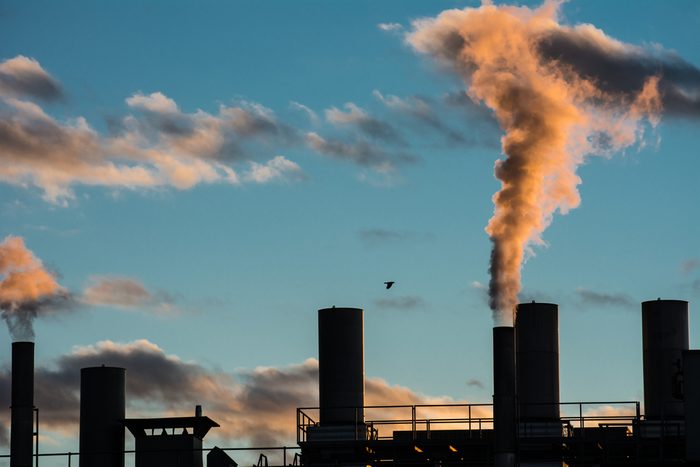
Air Pollution in Canada
According to the World Health Organization, 91 percent of the world’s population is living in spaces where the WHO’s air quality guidelines are not met. High levels of air pollution comes with an increased risk of heart disease, stroke, lung cancer, and respiratory diseases such as asthma. While Canada is far down the WHO’s worst-offender list (it’s actually third in the world for best air quality) many Canadian cities could still be at risk for causing health-related issues from poor air quality. Read on for the Canadian cities most affected and ways you can protect yourself.

#10 Saskatoon, Saskatchewan
Saskatoon falls below the WHO’s recommended maximum level of 10 micrograms of PM2.5 (air particles of 2.5 or less micrometres in diameter) per cubic metre. The city has an average of 6.8 micrograms of PM2.5 per cubic metre, according to a 2016 Environment and Climate Change Canada report. Saskatoon shares this particulate matter level with London, Ontario.

#9 St. Catherine’s, Ontario
This city, less than an hour away from the U.S. border at Buffalo, has 6.9 micrograms of PM2.5 per cubic metre. To improve your indoor air quality, Health Canada recommends using an air filter such as HEPA filters and electrostatic precipitators, which can reduce some air contaminants, though steer clear of any filters that produce lung-irritating ozone.
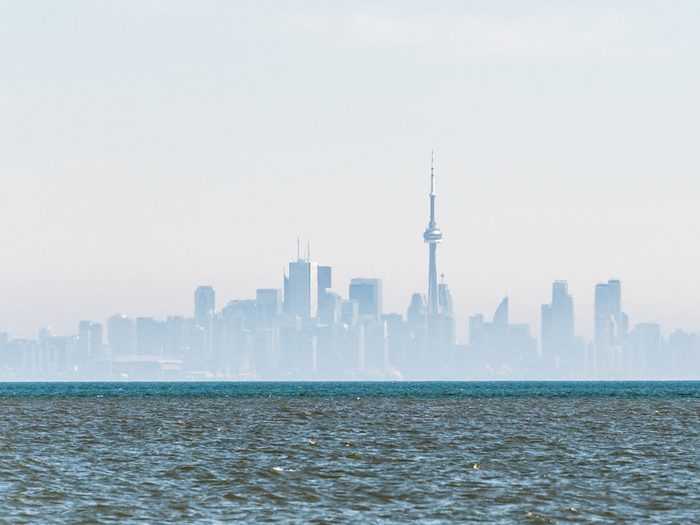
#8 Toronto, Ontario
It comes as no surprise that Canada’s biggest city has a lot of air pollution. Toronto has an average of 7 micrograms of PM2.5 per cubic metre. Ontario cities often face high levels of smog in the summer months. This mixture of air pollutants can be a respiratory irritant, which can impact those living with respiratory diseases such as COPD. If you experience symptoms during smog and high humidity, controlling the humidity inside your home can help to improve your symptoms, according to the Ontario Lung Association.
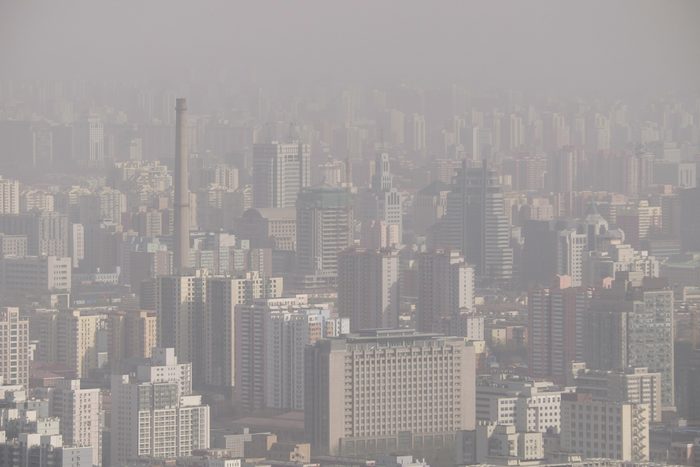
#7 Montreal, Quebec
Montreal, situated along the St. Lawrence River, has an average of 7.1 micrograms of PM2.5 per cubic metre. Reports have found that Montreal has some of the worst air quality in Canada because of the high number of wood-burning stoves—the city has 50,000 domestic wood-burning appliances, though new rules will force homeowners to replace or stop using them. The government of Quebec recommends using alternate heat sources in your home and burning only dry hardwood such as oak.
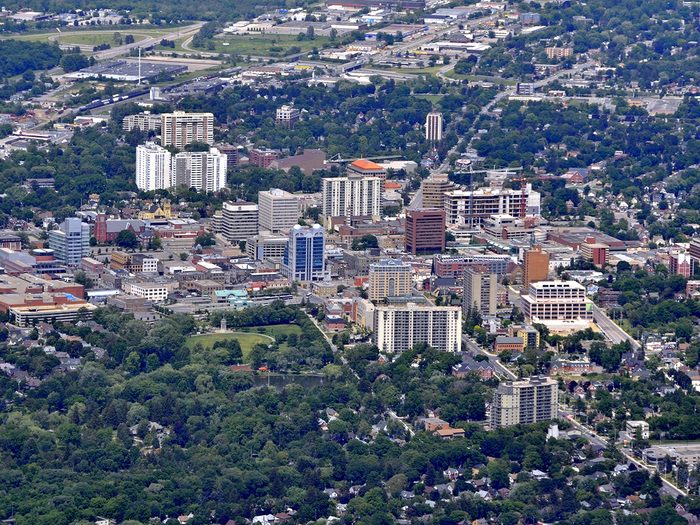
#6 Kitchener, Ontario
This city, about an hour west of Toronto, has an average of 7.3 micrograms of PM2.5 per cubic metre. You can reduce your overall exposures to pollutants by limiting physical activity during times of poor air quality and staying indoors.
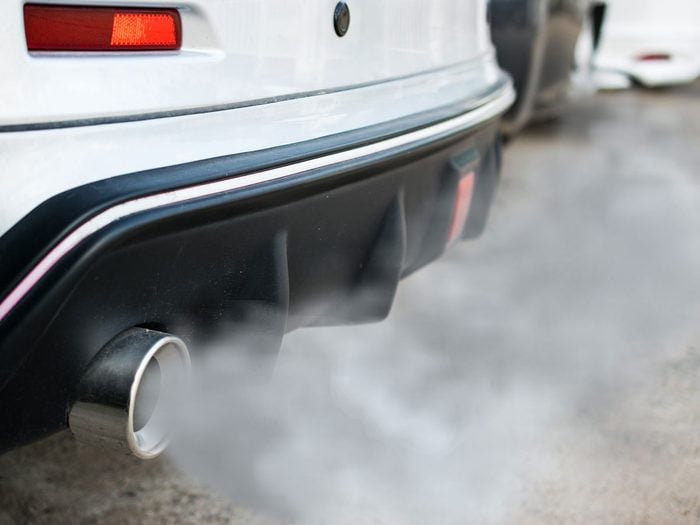
#5 Hamilton, Ontario
Hamilton has an average of 7.8 micrograms of PM2.5 per cubic metre. In 2016, the city had the highest rate of air pollution in the province of Ontario—mostly due to industry and car travel.
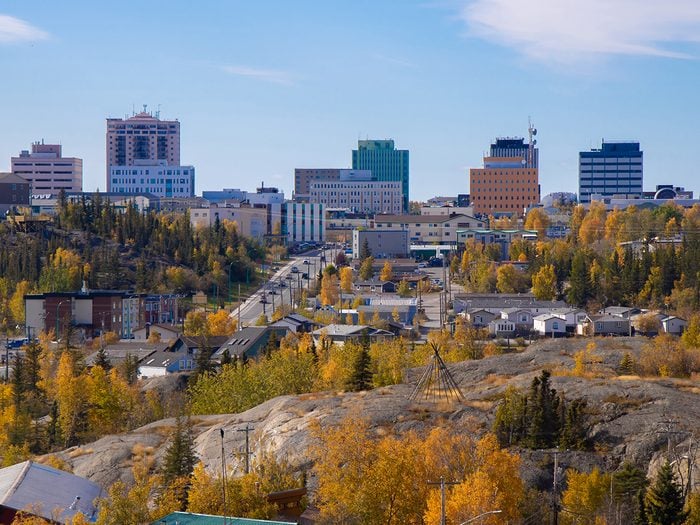
#4 Yellowknife, Northwest Territories
Yellowknife, also has an average of 7.8 micrograms of PM2.5 per cubic metre, but the trendline is moving in the right direction. The city has actually greatly improved their air pollution—in 2014, Yellowknife averaged 15.8 micrograms of PM2.5 per cubic metre.
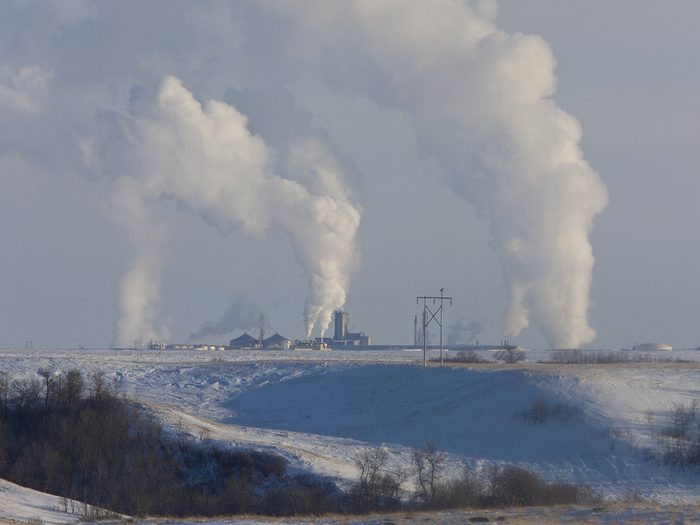
#3 Regina, Saskatchewan
Regina, the capital city of Saskatchewan, is located on the prairies in the centre of North America. This city’s air pollution registers at 8.1 micrograms of PM2.5 per cubic metre. In 2008, the city had a PM2.5 of 4.6, marking an increase of 170 percent. Due to the Fort McMurray fires, entire regions of western Saskatchewan are now also experiencing poor air quality measurements.
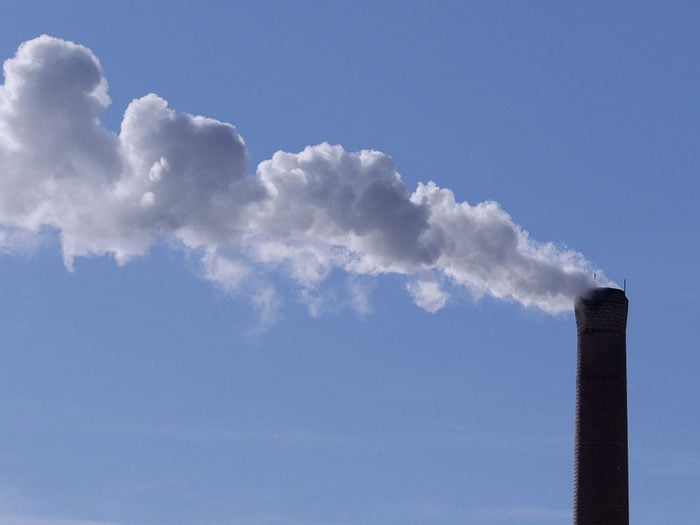
#2 Quebec City, Quebec
The capital city of Quebec has an average of 8.2 micrograms of PM2.5 per cubic metre of air pollution. While anyone can be affected by pollution, those at the greatest risk include individuals with heart conditions, respiratory conditions, people with diabetes, the elderly, children and pregnant women, according to the Heart and Stroke Foundation. Talk to your doctor about strategies to help reduce your daily risk.
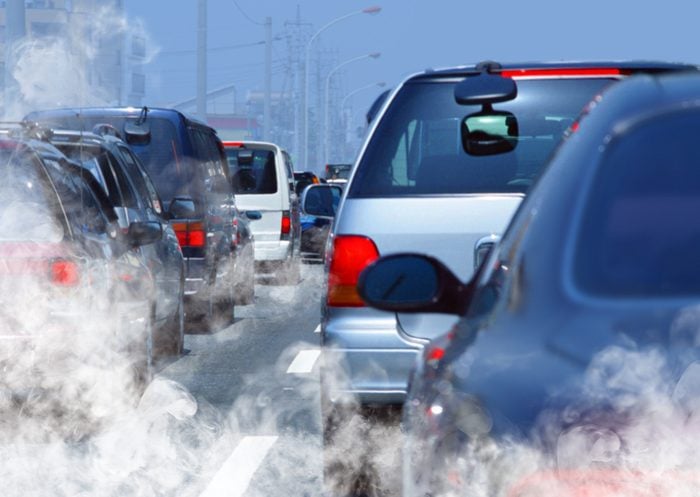
#1 Windsor, Ontario
Windsor, a city located along the Detroit River, has an average of 8.3 micrograms of PM2.5per cubic metre. Individuals with lung or heart disease should consult Environment Canada’s Air Quality Health Index before taking up physical activities on days of increased air pollution.
